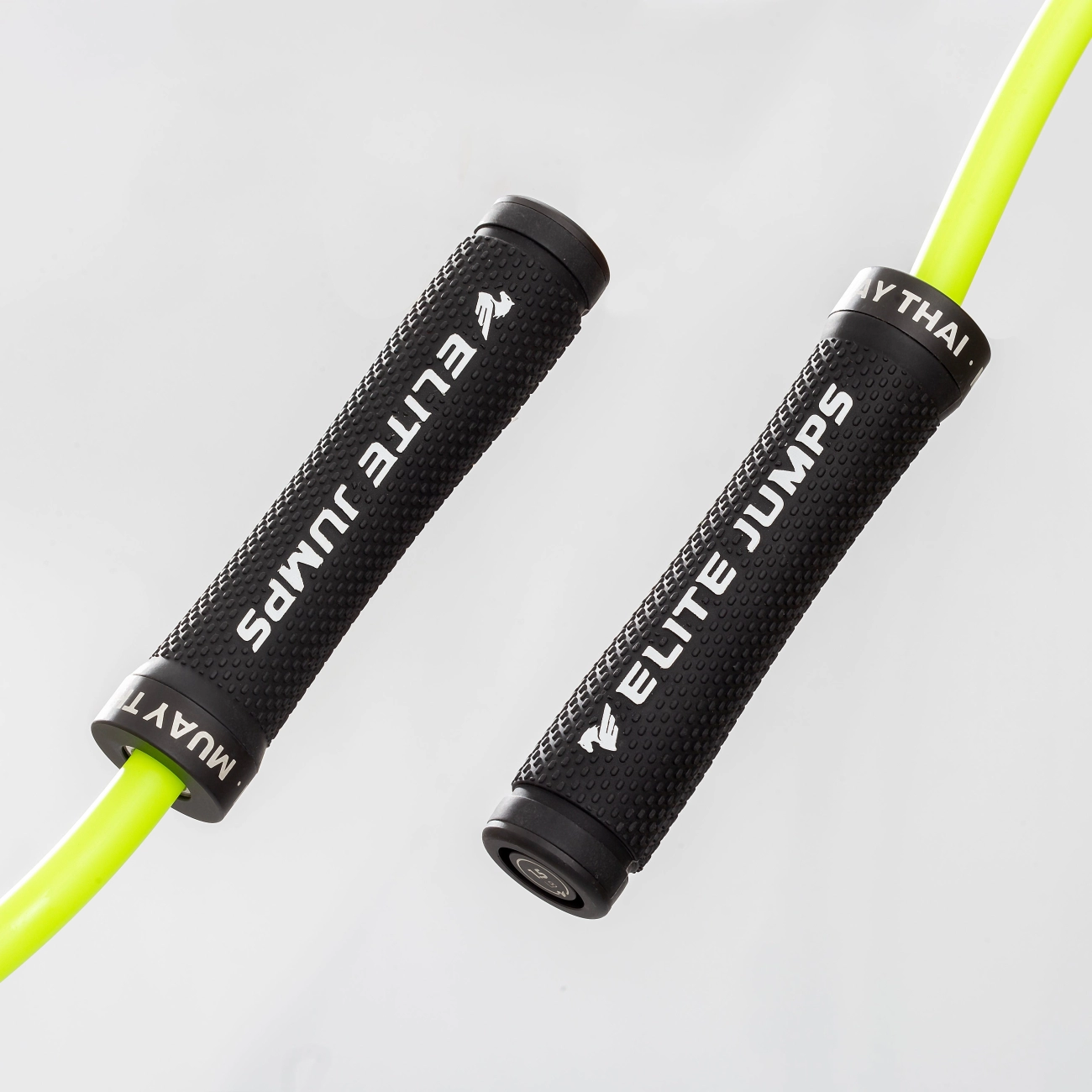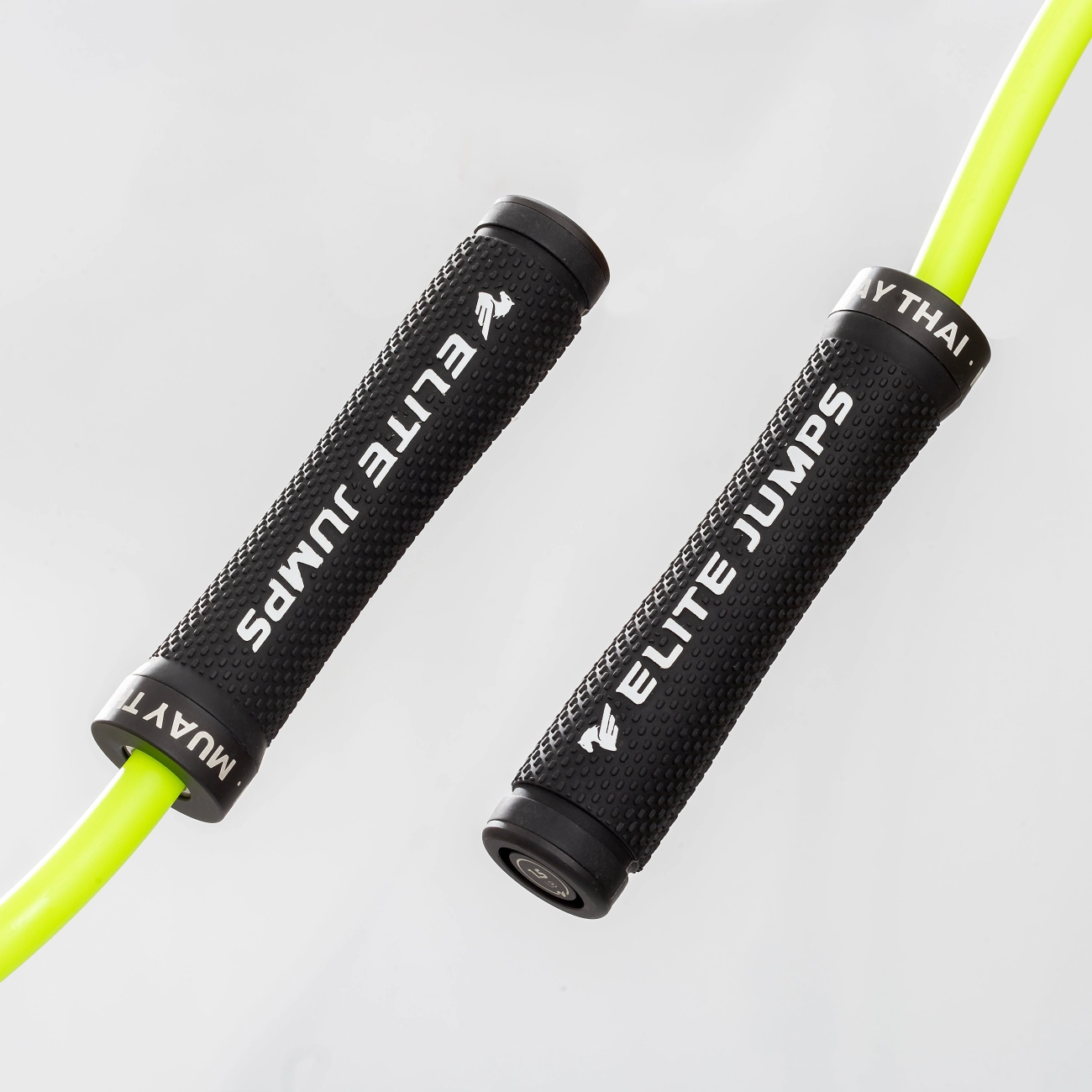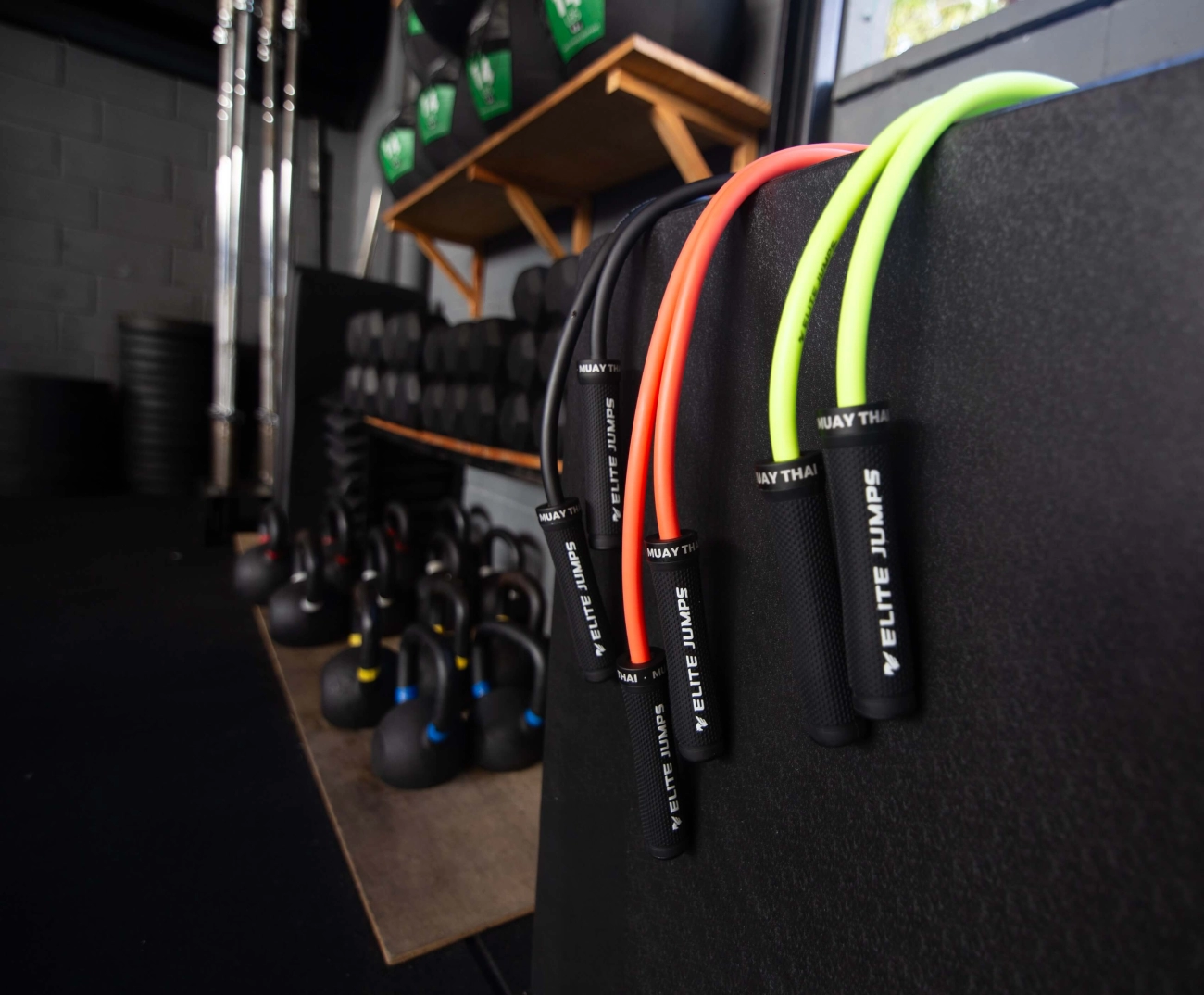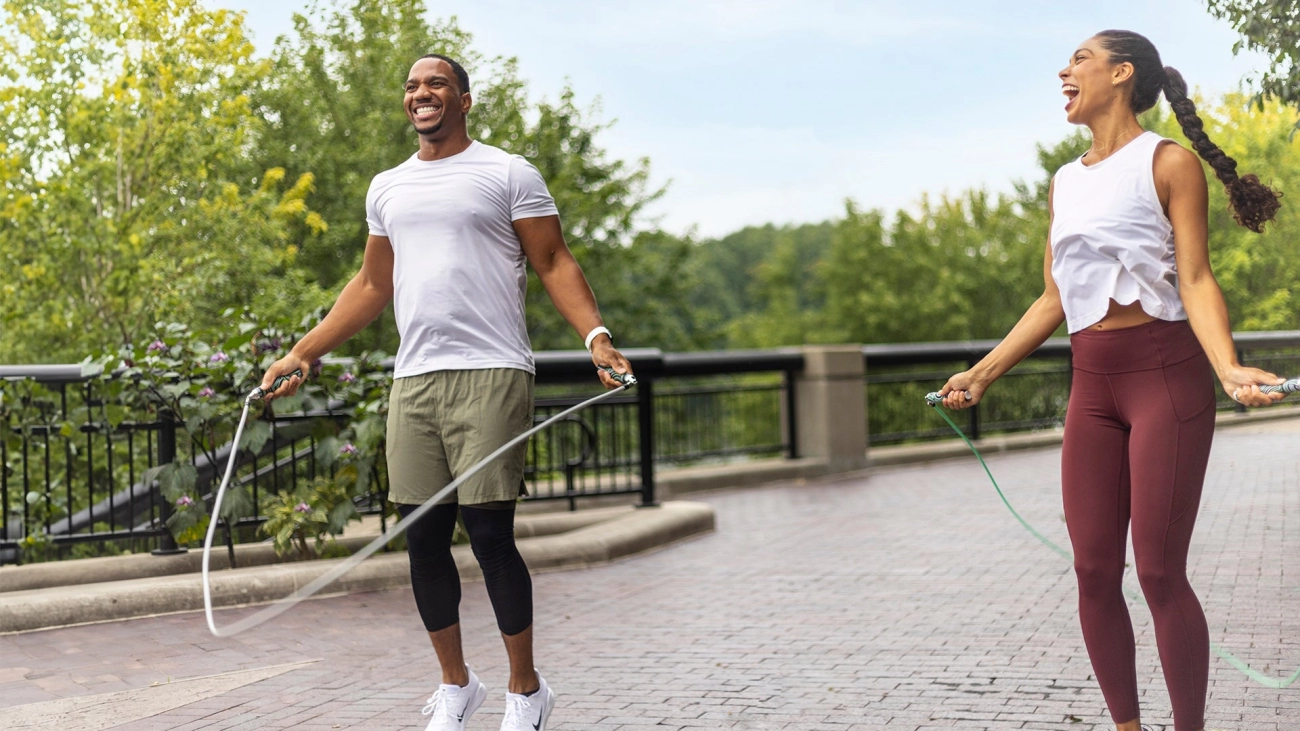Correct Rope Skipping Posture
Getting your rope skipping posture right is more than just looking good while jumping—it directly impacts your workout efficiency, calories burned, and how well your muscles engage during exercise. Proper form helps you maximize every jump, making your session more effective without extra effort.
Impact on Workout Efficiency and Muscle Engagement
When you maintain the correct rope skipping technique, you ensure your body moves in harmony. This means:
- More calories burned due to efficient movement patterns and less wasted energy.
- Targeted muscle engagement involving your core, calves, shoulders, and forearms, improving strength and endurance.
- Smoother coordination between your jumps and rope swings, enhancing rhythm and timing.
Skipping rope using poor form can lead to uneven energy use, premature fatigue, and less effective workouts.
Injury Prevention and Common Injury Risks from Poor Posture
Skipping rope with improper posture puts you at risk of injuries that can stop your progress. Common issues include:
- Ankle sprains and shin splints from landing flat-footed or with locked knees.
- Wrist strain and elbow pain when using whole arms instead of just wrists to turn the rope.
- Neck and shoulder tension due to hunched shoulders or looking down.
- Lower back pain from slouching or over-leaning during jumps.
By focusing on correct posture, you reduce these risks significantly, allowing longer, pain-free sessions.
Long Term Benefits for Fitness and Cardiovascular Health
Adopting the proper jump rope body alignment not only keeps you safe but boosts your overall health:
- Improves cardiovascular endurance by promoting consistent, controlled movement.
- Supports better body mechanics that transfer to other exercises and daily activities.
- Builds a strong core and lower body foundation leading to improved balance and posture.
- Prevents chronic wear and tear by distributing impact forces evenly.
In the long run, correct posture during rope skipping helps you build sustainable fitness, avoid injury, and enjoy the full health benefits of this high-impact cardio workout.
For more detailed tips on maintaining proper form and selecting the best gear, check out our guide on adjustable skipping ropes designed to support optimal rope skipping posture.
Key Elements of Correct Rope Skipping Posture for Better Workout Form

Getting your rope skipping posture right is essential for maximizing workout benefits and minimizing injuries. Here’s a breakdown of the key body positions you need to focus on for proper jump rope form and to improve your rope skipping technique.
Head and Neck Alignment
- Keep your head up and eyes forward to maintain a neutral neck position.
- Avoid looking down at your feet or the rope, as this can strain your neck and affect balance.
Shoulders and Upper Body
- Keep your shoulders relaxed and down to avoid unnecessary tension.
- Tense, raised shoulders can lead to neck stiffness and reduce efficiency in arm movement.
Arms and Elbows Position
- Elbows should stay close to your torso for stability.
- Use your forearms to move the rope rather than swinging your entire arms. This helps conserve energy and keeps your rhythm steady.
Hands and Wrists Movement
- Maintain a loose grip on the handles to prevent fatigue in your hands.
- Let your wrists control the rope’s turning motion; this is the main power source for smooth rope rotation and better timing.
Back and Core Stability
- Keep an upright posture with your back straight but not stiff.
- Engage your core muscles to stabilize your spine and support efficient movement throughout your skipping rope workout.
Hips and Body Lean
- Slightly bend your hips with a gentle forward lean to stay balanced.
- Avoid slouching or leaning too far forward as it can cause back strain and poor alignment.
Knees and Leg Position
- Keep your knees slightly bent to absorb shock from each jump.
- Avoid locking your knees which can lead to joint injuries and reduce shock absorption.
Feet and Landing Technique
- Land softly on the balls of your feet with a light bounce.
- This reduces impact on your joints and supports a smooth, continuous skipping rhythm.
Focusing on these elements will improve your jump rope body alignment and make each session safer and more effective. Proper skipping rope workout form not only boosts calorie burn and muscle engagement but also sets you up for long-term fitness success.
Step by Step Guide to Achieve the Correct Rope Skipping Posture

Getting your rope skipping posture right makes a world of difference in your workout efficiency and injury prevention. Here’s a simple guide to help you nail the proper jump rope form every time.
Start with a Warmup
Before you jump in, always warm up with light cardio like jogging or jumping jacks. Follow this with dynamic stretches focusing on your calves, shoulders, wrists, hips, and knees. A good warmup preps your muscles and joints to move safely and smoothly during your skipping rope exercise.
How to Stand Before Jumping Rope
- Feet hip-width apart for balance.
- Keep your weight on the balls of your feet—this allows a quick, light bounce.
- Engage your core to maintain an upright, stable posture.
- Keep your head up and eyes forward to ensure your neck stays neutral.
- Relax your shoulders and arms, keeping elbows close to your sides.
Check Your Rope Length and Adjustments
Using the right rope length is critical for maintaining good skipping rope posture and rhythm:
- Stand on the middle of the rope with one foot.
- Pull the handles straight up along your sides—the handles should reach roughly your armpits.
- If the rope is too long, shorten it (many ropes have adjustable lengths, like our 5mm PVC Skipping Rope).
- If too short, swap for a longer one like our 10-foot Skipping Rope.
Mastering Wrist Rotation and Timing Your Jumps
- Use your wrists to turn the rope, not your whole arms—this keeps your arms relaxed and efficient.
- Small, controlled wrist flicks help maintain rope speed without wasting energy.
- Keep your elbows close to your torso to reduce arm fatigue.
- Time your jumps right as the rope passes under your feet—stay light and avoid jumping high; a 1-2 inch lift is enough.
Maintain Posture During Longer Skipping Sessions
- Focus on regularly checking your form every few minutes.
- Take brief pauses to shake out tension in your shoulders and wrists.
- Keep your core engaged to support your back and maintain balance.
- Breathe steadily to avoid neck and shoulder tightening.
Increasing Speed and Intensity Safely
- Start with a comfortable, steady pace using proper technique.
- Gradually increase your jumping speed without hopping too high or tensing your shoulders.
- Incorporate intervals of faster skipping followed by slower recovery phases.
- Always prioritize proper form over speed – this prevents injury and improves workout benefits.
- For tips on advancing your routine while maintaining good posture, check out our Good Skipping Rope Routine.
Sticking to these steps will help you build solid rope skipping technique that’s both effective and safe. Remember, consistent practice with the correct posture boosts your workout’s calorie burn, targets muscles better, and keeps you injury-free.
Common Rope Skipping Mistakes and How to Fix Them

When it comes to correct rope skipping posture and technique, small errors can reduce your workout efficiency and increase injury risk. Here are some common rope jumping mistakes and straightforward ways to fix them:
Landing Flat Footed or On Heels
Why it matters: Landing flat or on your heels puts unnecessary strain on your joints and limits shock absorption.
Fix it:
- Land softly on the balls of your feet.
- Keep a slight bend in your knees to absorb impact.
- Practice light bounces focusing on foot placement before jumping rope at full speed.
Hunched Shoulders and Tense Neck
Why it matters: Tension in your shoulders and neck causes fatigue and poor alignment, disrupting your rope skipping form.
Fix it:
- Keep your shoulders relaxed and down.
- Maintain a neutral neck position by looking straight ahead.
- Roll your shoulders before starting to release any tightness.
Using Whole Arms Instead of Wrists
Why it matters: Swinging the rope with your arms wastes energy and throws off timing.
Fix it:
- Keep your elbows close to your torso.
- Use mostly your wrists to turn the rope with small, controlled motions.
- Practice slow rope swings focusing on wrist control before jumping.
Jumping Too High Off the Ground
Why it matters: High jumps increase fatigue and stress on your calves and knees.
Fix it:
- Aim for a light bounce just high enough to clear the rope—about 1 to 2 inches.
- Keep your posture tight and stay close to the ground.
- Focus on quick, precise jumps rather than height.
Slouching or Leaning Too Far Forward or Backward
Why it matters: Poor spine alignment causes imbalances and can lead to back pain.
Fix it:
- Maintain an upright posture with a slight forward lean from the ankles, not the waist.
- Engage your core to stabilize your back.
- Use a mirror or record yourself to check your body alignment.
Overstriding or Too Wide Jumps
Why it matters: Wide jumps waste energy and increase ankle strain.
Fix it:
- Keep your feet hip-width apart and land softly with both feet together.
- Think of small, quick steps rather than big jumps.
- Focus on rope timing to naturally keep jumps controlled and narrow.
Mastering these fixes improves your rope skipping exercise benefits and helps you enjoy a safer, more effective workout. Focus on posture and form as much as speed for the best results.
Additional Tips for Enhancing Rope Skipping Posture
Improving your rope skipping technique goes beyond just practicing jumps. Incorporating these extra tips will help you maintain the proper jump rope form, reduce injury risks, and boost your overall workout efficiency.
Strengthening Exercises for Better Posture
Strong muscles support correct rope skipping posture and body alignment. Focus on these areas:
- Core muscles: A strong core stabilizes your torso, helping maintain an upright posture while skipping.
- Shoulders: Strengthen and loosen your shoulders to keep them relaxed and avoid tension.
- Calves: Strong calves absorb impact better, allowing you to land softly and maintain a light bounce without straining.
Incorporate simple strength routines like planks, shoulder presses, and calf raises into your weekly workout to complement your rope skipping sessions.
Balance and Flexibility Routines
Smooth, fluid jumps require good balance and flexibility. Try these:
- Dynamic stretches before jumping to loosen muscles and joints.
- Yoga or Pilates can enhance your overall balance and flexibility, which helps maintain the right posture during longer skip rope workouts.
- Pay special attention to hip and ankle mobility to avoid overstriding or stiff landings.
Wearing Proper Footwear for Jump Rope Workouts
Proper shoes play a major role in injury prevention and posture:
- Choose lightweight shoes with good cushioning to protect your feet and knees.
- Supportive soles help maintain correct footing, landing softly on the balls of your feet.
- Avoid running shoes with too much bulk or flat-soled shoes, as they can throw off your jump rope body alignment.
Importance of Rest and Recovery
Muscle fatigue leads to poor posture and increased injury risk. Make sure to:
- Rest adequately between skipping sessions.
- Use active recovery techniques like gentle stretching or foam rolling to keep muscles flexible.
- Avoid jumping through fatigue, which often causes slouching or improper arm usage.
How Rope Design Supports Optimal Posture and Performance
A quality jump rope affects your form and workout comfort significantly:
- Lightweight ropes like RPM skipping ropes or PVC jump ropes allow smooth wrist motion, letting you use your forearms instead of the entire arm.
- Adjustable length ropes ensure you maintain the best height for your stature, critical for proper jump rope technique.
- Check out options like the boxing skipping rope for durable, flexible ropes designed for speed and control.
Investing in the right equipment and paying attention to your body mechanics makes all the difference in mastering the best way to skip rope while protecting your joints and maximizing workout benefits.
Frequently Asked Questions about Correct Rope Skipping Posture
How Often Should I Practice Skipping with Correct Posture
Consistency is key when it comes to rope skipping technique and maintaining proper form. Aim to practice skipping rope with correct posture at least 3 to 4 times a week. Short, focused sessions of 10 to 20 minutes are enough to build muscle memory and improve your jump rope body alignment. Regular practice helps increase workout efficiency, burns more calories, and reduces injury risk.
Can I Skip Rope if I Have Knee or Back Problems
If you have knee or back issues, skip rope injury prevention is critical. Low-impact jumping and proper posture can help, but you should:
- Consult a healthcare professional before starting.
- Stick to soft landings on the balls of your feet to reduce joint stress.
- Keep your knees slightly bent and engage your core to support your spine.
- Use a softer surface or mat rather than hard floors.
If any pain worsens, stop and rest. Sometimes modified routines or alternative cardio exercises may be better.
What’s the Best Rope Material for Beginners
For beginners, choosing the right rope makes a big difference in learning proper jump rope form. The best materials are:
- PVC ropes: Lightweight, smooth, and easy to control—great for speed and basic jumps.
- Beaded jump ropes: Offer good feedback and durability, helpful for rhythm and timing.
- Avoid heavy or overly stiff ropes until your technique improves. A properly sized rope also helps maintain correct posture by preventing unnecessary strain.
How to Avoid Wrist Pain While Skipping
Wrist pain is a common issue if you don’t focus on the right rope skipping posture tips. To avoid it:
- Use a loose grip; don’t squeeze handles tightly.
- Rotate the rope mainly with your wrists, not your whole arms.
- Keep your elbows close to your torso to minimize tension.
- Warm up your wrists with gentle stretches before jumping.
- Start slow to build strength and avoid overuse.
Following these tips ensures your skipping rope workout form stays clean and pain-free, so you can keep jumping longer without discomfort.



